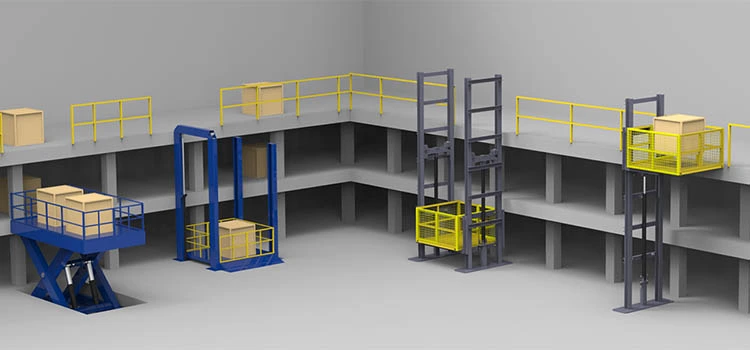Exploring the World of Lifts: Typical Problems Faced by Various Lift Mechanisms
As we navigate via the vertical transport systems of contemporary buildings, lifts stand out as a crucial element of our day-to-day lives. From hydraulic elevators to traction systems and machine-room-less styles, each lift kind comes with its set of typical issues.
Hydraulic Lifts
Hydraulic lifts, frequently favored for low-rise structures, utilize fluid pressure to regulate the activity of the lift automobile (lift repair companies). This device involves a hydraulic pump pushing oil into a cyndrical tube, creating the lift to relocate in the desired direction. While hydraulic elevators are understood for their quiet and smooth operation, they do come with their own collection of usual issues
One prevalent problem with hydraulic elevators is oil leakage. In addition, concerns with the control system, such as faulty valves or a malfunctioning pump, can create disturbances in the lift's motion.
Routine maintenance and prompt repair work are important to make sure the smooth functioning of hydraulic elevators. By addressing these usual concerns proactively, structure owners can minimize downtime and ensure the safety and security and performance of their upright transportation system.
Traction Lifts
When thinking about vertical transportation systems in structures, one more common type apart from hydraulic elevators is the traction lift. Traction elevators run utilizing a system of ropes and counterweights that relocate the elevator vehicle by clutching onto the hoist ropes. This system enables smoother and much faster upright transportation contrasted to hydraulic systems.
Among the common concerns dealt with by traction lifts is rope wear. The consistent motion of the ropes within the traction system can bring about tear and wear in time, possibly creating the elevator to malfunction or become hazardous for usage. Routine inspections and upkeep of the ropes are important to ensure the lift's proper performance and safety.
Another concern that traction lifts might come across is related to the control system. Issues with the control system can lead to problems such as unpredictable motion, delays in reaction times, or even total closures. Regular testing and maintenance of the control system are essential to avoid such problems and guarantee the lift's reliability.
Machine-Room-Less (MRL) Lifts

Among the crucial components of MRL lifts is the compact gearless traction equipment that is installed within the hoistway. This device effectively drives the elevator cars and truck without the demand for cumbersome devices located in conventional grip elevators. In addition, MRL elevators normally use a counterweight system to balance the car, more enhancing their power efficiency.
Regardless of their advantages, MRL lifts might face obstacles connected to upkeep and repair service because of the restricted space for tools installment. Availability for servicing parts within the shaft can be restricted, calling for specialized training for technicians. Correct upkeep schedules and normal evaluations are crucial to make certain the continued smooth operation of MRL elevators.
Overloading and Weight Limitation Issues
Overwhelming and weight limitation problems are important problems in lift procedures. Elevator producers design lifts with specific weight abilities to make certain guest safety and security and tools durability.
When elevators are overloaded, it places too much pressure on the motor, cable televisions, and other components, possibly triggering malfunctions or break downs. If they discover excess weight, safety mechanisms such as sensing units and overload sensors are in place to protect against lifts from moving. In addition, surpassing weight limits can bring about boosted energy consumption and damage on the elevator system.
To mitigate straining problems, constructing managers must prominently present weight limitations in lifts and inform occupants on the relevance of adhering to these constraints - lift repair companies. Regular upkeep checks by certified professionals can likewise aid lift companies in London make sure that elevators are operating within secure weight parameters. By resolving overloading and weight limitation issues proactively, structure owners can improve lift safety and effectiveness
Electric System Failures
Going beyond weight restrictions in lifts can not just lead to mechanical concerns yet additionally possibly contribute to electric system failures within the lift framework. Electrical system failings are an important worry in lift procedure, as they can cause unforeseen shutdowns, malfunctions, or even safety dangers.
Moreover, power surges or changes in the electrical supply can additionally interrupt the elevator's operation, influencing its performance and security. These electrical disabled platform lifts prices uk disturbances can damage delicate elevator parts such as control panels, circuit boards, or sensors, causing system failures. Normal maintenance and evaluations are important to determine and attend to possible electrical issues without delay, guaranteeing the reliable and secure operation of lift systems. By adhering to weight limits and performing routine electric system checks, building owners can mitigate the danger of electrical failings in lifts.
Conclusion

Hydraulic elevators, frequently favored for low-rise structures, make use of fluid pressure to regulate the activity of the elevator vehicle.When taking into consideration upright transport systems in buildings, another common kind aside from hydraulic elevators is the grip elevator. Traction elevators run utilizing a system of ropes and weights that move the elevator car by gripping onto the hoist ropes. Unlike traditional lifts that call for a separate device area to house the tools, MRL lifts incorporate many of the components within the shaft, eliminating the requirement for a devoted device room.In final thought, elevators deal with common problems such as hydraulic breakdowns, grip system failures, and electrical system troubles.